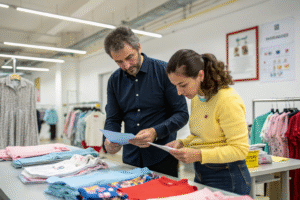Finding a reliable kids wear manufacturer is one of the most critical steps when building or scaling a children’s apparel brand. The U.S. market, in particular, demands high standards for safety, comfort, and timely delivery. Yet many buyers struggle to identify truly dependable suppliers from thousands of vendors claiming to be “certified” or “experienced.”
The reality is: choosing the wrong manufacturer can cost your business thousands — through delayed shipments, rejected quality, or missed sales seasons. That’s why smart buyers look beyond price alone and evaluate sourcing partners across multiple dimensions.
In this article, I’ll walk you through the proven steps we recommend — and that our clients use — to find kids wear manufacturers who can support long-term brand success. Whether you’re sourcing from China, India, or Vietnam, these strategies can help you reduce risk and increase sourcing confidence.
What Certifications Should a Kidswear Manufacturer Hold?
Certifications are more than paper; they’re the foundation of trust in children’s clothing production. They demonstrate that the factory operates under ethical, environmental, and product safety guidelines.
A reliable manufacturer should hold third-party certifications relevant to baby and children’s apparel.
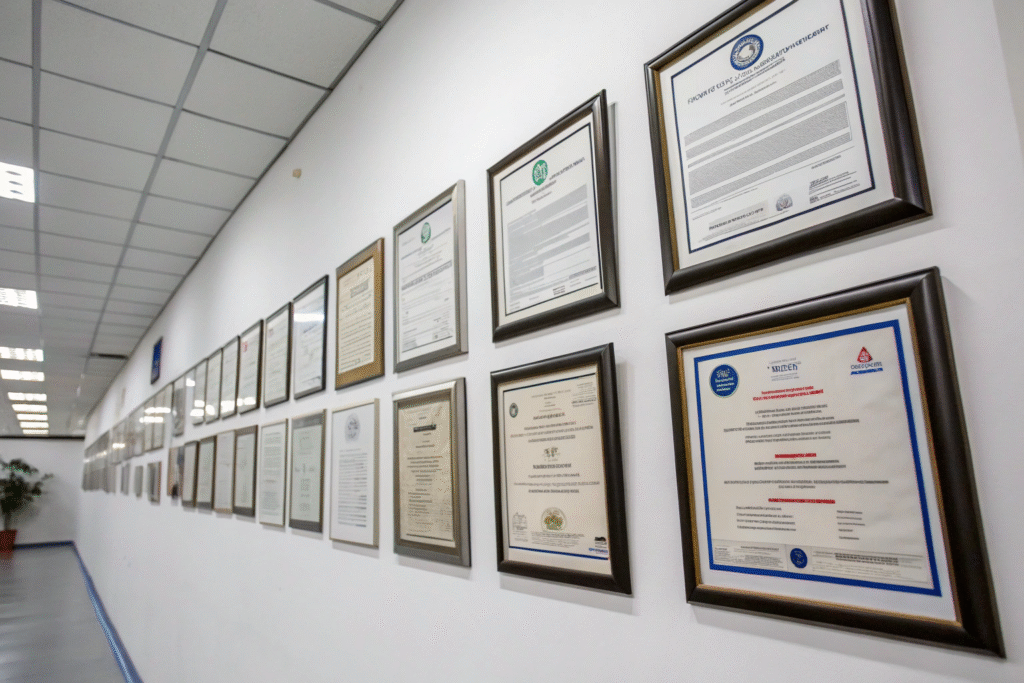
Why Are Certifications Like GOTS or OEKO-TEX Important?
These two labels are crucial in today’s U.S. market. GOTS (Global Organic Textile Standard) certifies that the entire supply chain — from fiber to dyeing and stitching — meets organic and environmental criteria. OEKO-TEX Standard 100 ensures the garment has been tested for harmful substances and is safe for infant skin.
Major U.S. retailers now require at least one of these certificates before onboarding new brands or manufacturers. Without them, you risk being disqualified from partnerships or pulled from shelves during audits.
How Can You Verify if a Certificate Is Authentic?
Always request the certificate’s number and issuing body. Then verify it on the official site. For example, GOTS has a searchable public database of certified entities. If a supplier refuses to share, it's a red flag.
Also, ask for lab test reports from third parties like Intertek or SGS. These labs assess physical safety — like seam strength, colorfastness, or choking hazard risks — which matter for children's wear.
How to Assess Production Capability and Quality Control?
Even if a manufacturer has great certifications, they still need the capability to deliver consistent quality at scale. This is where production capacity and quality systems matter most.
The best factories run documented QA systems, maintain dedicated QC teams, and offer transparency at every step.
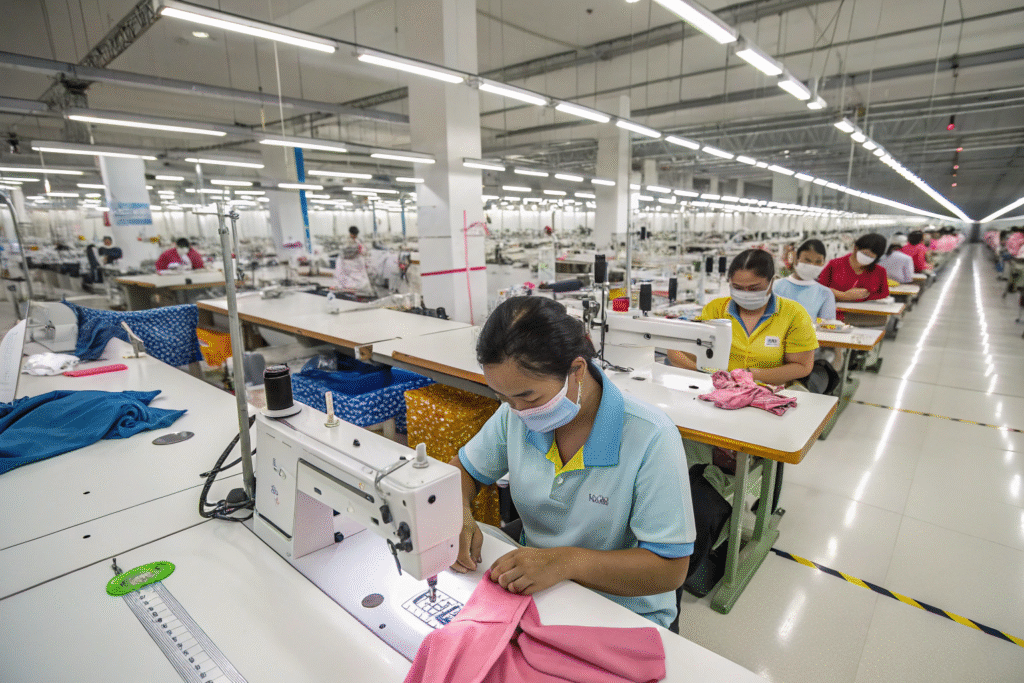
What Questions Should You Ask About Quality Assurance?
Ask if the factory follows AQL inspection standards — a globally recognized method of sampling production batches. If they do, request the latest internal or third-party inspection report.
Also, inquire about their defect ratio, response time to customer complaints, and how they handle size grading across baby and toddler ranges. Consistency in fit is a critical success factor for retail-ready children’s clothing.
Can You Request a Virtual Factory Tour?
Absolutely. In fact, video tours have become a standard vetting tool post-COVID. Ask the factory to record a 10-minute walkthrough showing key areas — cutting, stitching, pressing, and packing. Some tech-forward suppliers even offer real-time video call tours using smartphones or wearable cameras.
This gives you an inside view of operations and lets you assess cleanliness, equipment age, and process flow — all without traveling. If they hesitate, consider it a warning sign.
What Are the Red Flags to Watch Out for When Sourcing?
Not all suppliers who claim to be kidswear specialists are trustworthy. Many are trading companies posing as factories, or poorly managed workshops that outsource most tasks.
Spotting the red flags early can save you from losing money and reputation.
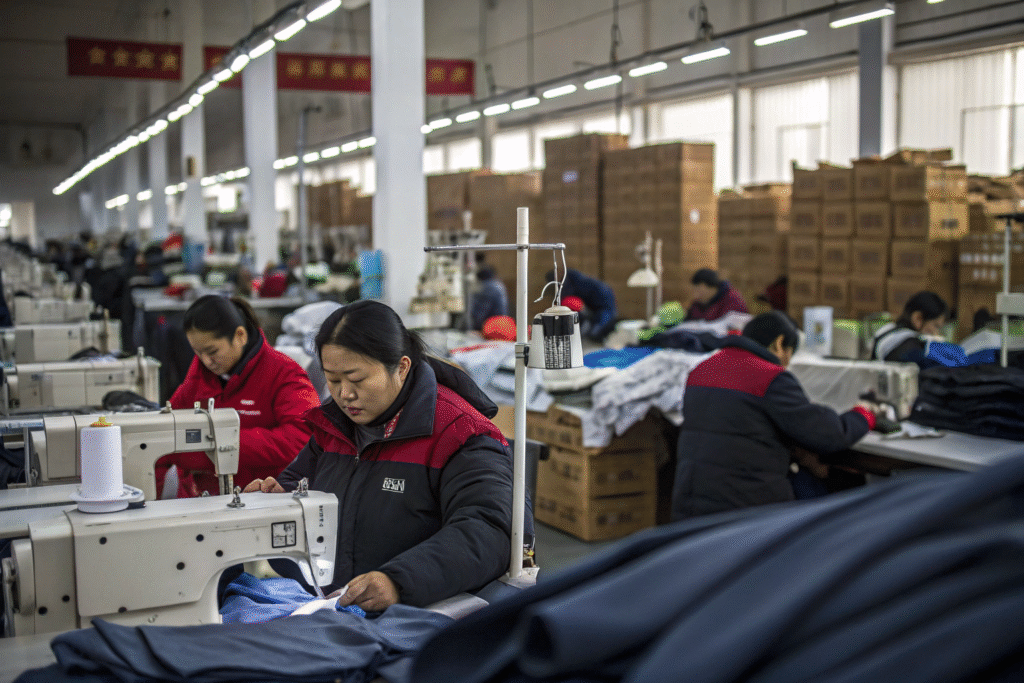
What Are Common Signs of an Unreliable Supplier?
- They only share lifestyle product photos but no factory interior images.
- They refuse sample customization before a big order.
- They change answers or delay responses when asked about certifications.
- Their MOQ keeps shifting depending on the day or salesperson.
- Their Alibaba profile is vague or newly registered.
Use tools like ImportYeti to check their shipment history to U.S. buyers. No exports over 3 months? Question their reliability.
Can a Trading Company Be Trustworthy?
Sometimes. Some trading firms add real value — like design consulting or multilingual communication. But make sure you clarify the relationship early. Ask: “Are you the manufacturer or an agent?” and verify their Chinese business license for production scope. If they’re transparent and can commit to QC, they might still be a good partner.
How to Build Long-Term Relationships With the Right Factory?
Once you find a potential manufacturer, the next step is building trust. Long-term partnerships save you money, improve quality, and allow faster go-to-market launches.
Strong relationships are based on clear expectations, regular communication, and shared growth goals.
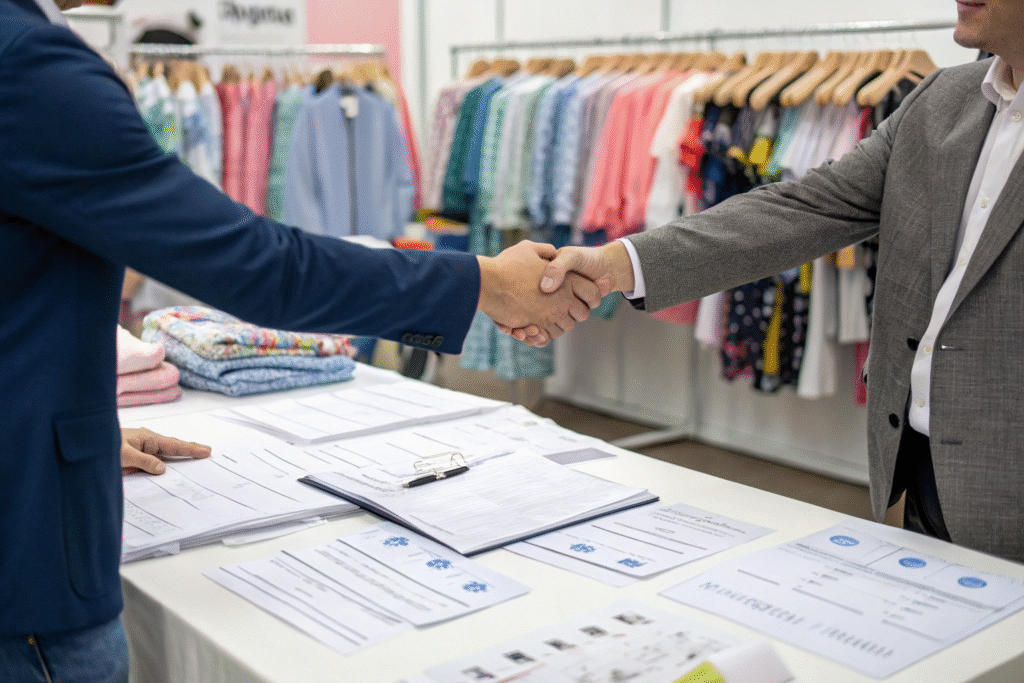
How Do You Start a Trial Production Safely?
Begin with a small trial order — say 200–500 pieces across 2–3 styles. Provide tech packs, fabric swatches, and full grading tables. Set clear timelines and quality metrics, and agree on how delays will be handled.
Include penalty clauses for late delivery in your purchase order. If the factory agrees, it shows they take accountability. You can also use Alibaba Trade Assurance for added protection on payments.
What’s the Best Way to Communicate With Overseas Factories?
Use visual-first tools like Trello or Slack for project tracking, paired with WeChat or WhatsApp for fast replies. Schedule weekly 15-minute check-ins. This habit alone helps resolve issues before they escalate.
Also, appoint one point of contact for sourcing, QC, and shipping updates. When a factory knows you’re organized and serious, they’ll treat your brand with the same professionalism.
Conclusion
Finding a reliable kidswear manufacturer doesn’t come from luck — it takes due diligence, strategic questioning, and a bit of intuition. From checking certifications to testing trial orders, each step is your insurance against delay, overpayment, or customer returns.
As a manufacturer, I’ve seen the difference between buyers who come prepared and those who just ask for the “best price.” The former build brands; the latter chase suppliers endlessly. By following these methods, you’ll not only find a good manufacturer — you’ll build a real supply chain partnership that lasts.
If you want to work with a factory that’s GOTS and OEKO-TEX certified, has 5 production lines, and delivers children’s fashion to top U.S. brands — you know where to find us.









